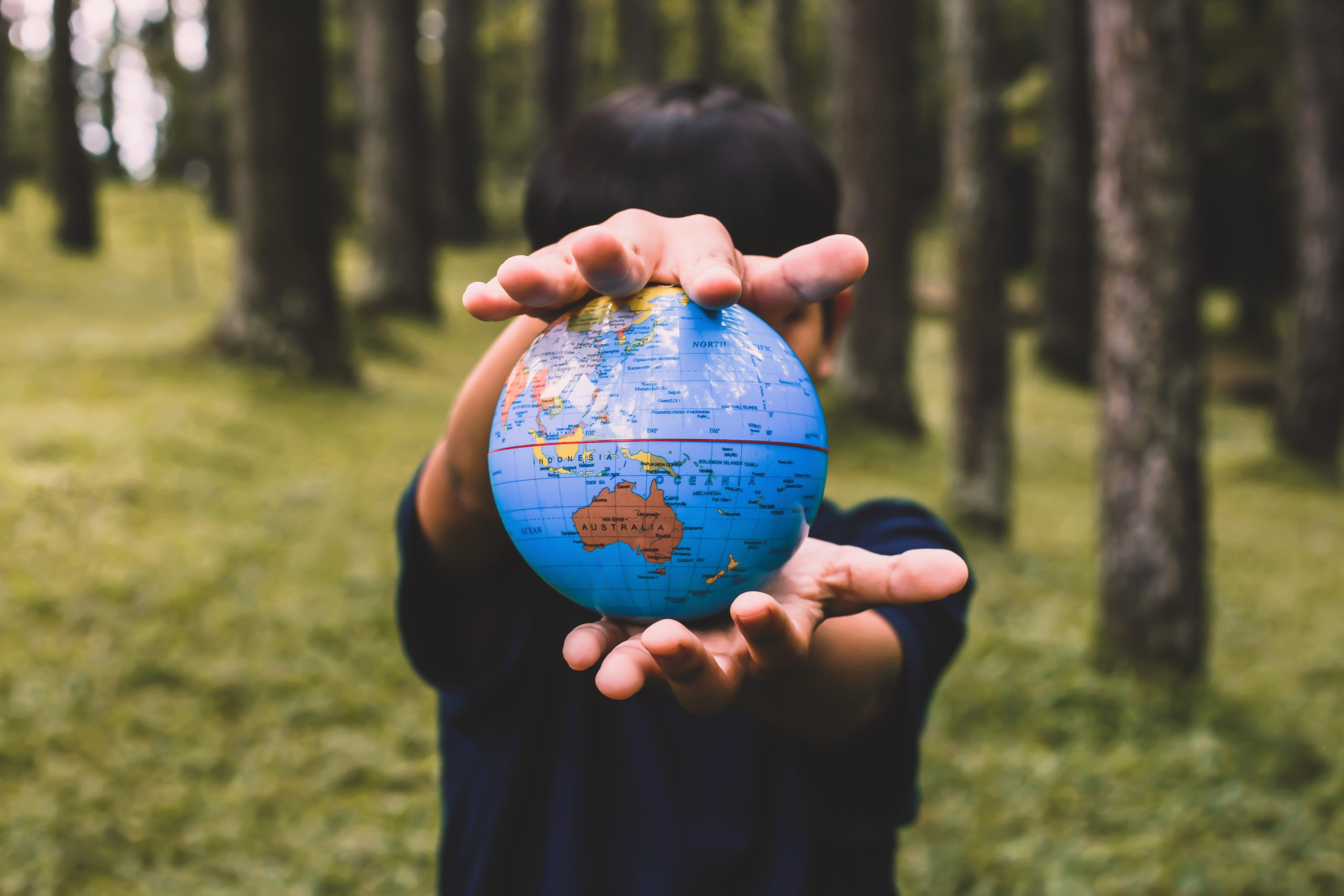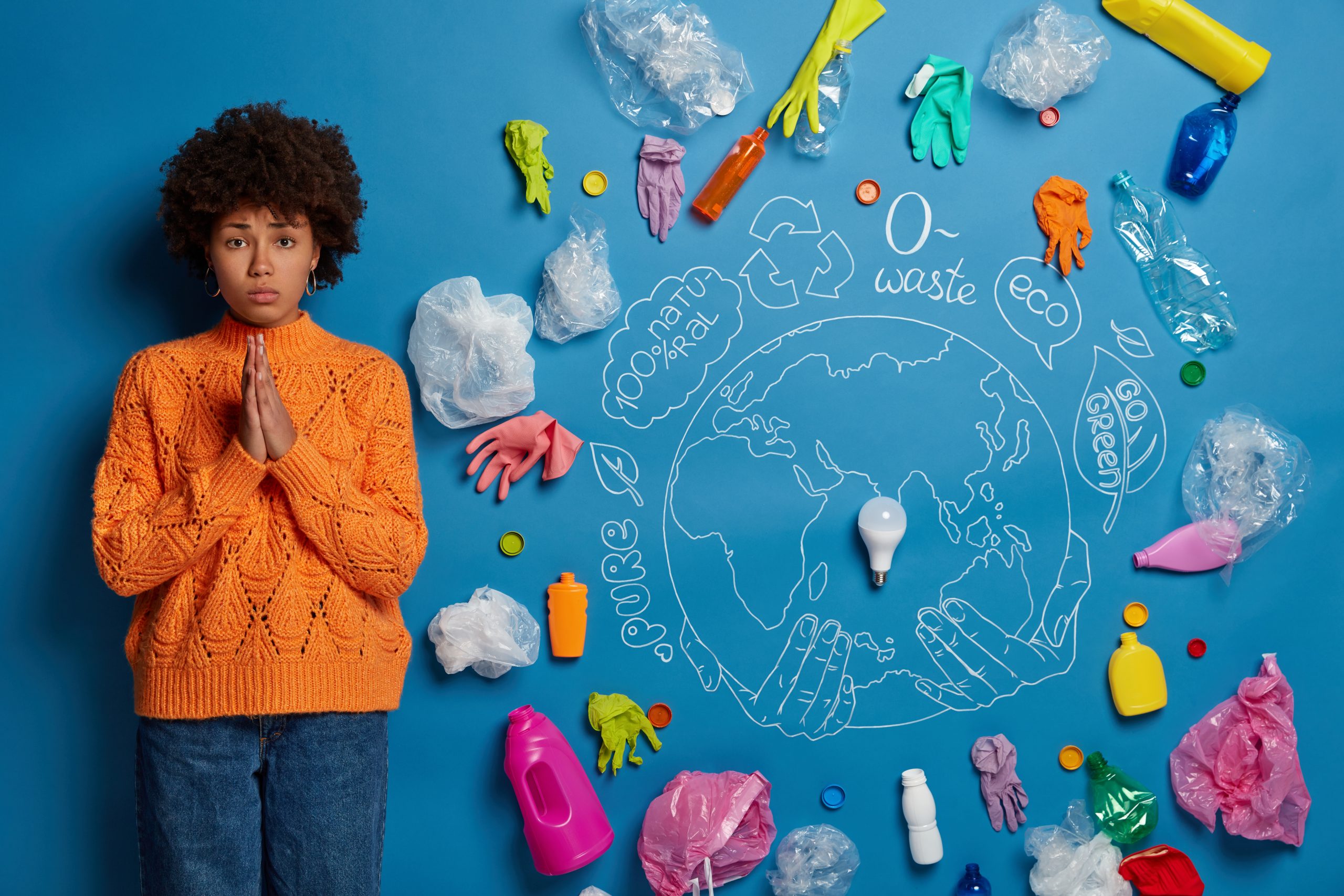ENVIRONMENT
LIBYA – Storm Daniel: The international community is organizing to send aid

Emergency services are trying to identify the number of victims caused by the passage of Storm Daniel, Sunday, September 10, 2023 on the east coast of the country. Torrential rains and the collapse of two dams led to the partial destruction of the city of Derna, which has a population of 100,000. The international community is organizing to provide emergency assistance.
Neighborhoods engulfed under water, dams that have broken, mudslides that take away buildings. The situation is dramatic in Libya, after the floods caused by storm Daniel last Sunday in the east of the country.
Libyan relief services under the Tripoli government, recognized by the international community, released a final human toll mid-day. According to their spokesman, Oussama Ali, the storm left at least 2,300 dead and 7,000 injured in the city of Derna alone, clearly the hardest hit.
The government of the East, rival to that of Tripoli, puts forward an even heavier record: it says that more than 5,200 people died in Derna. The Minister of Health even says he expects twice as many victims. The final toll remains very uncertain. The International Federation of Red Cross and Red Crescent Societies remains cautious on the numbers, but recognizes a «huge» death toll that can be counted in thousands. There are an estimated 10,000 missing. There are also 65 other deaths in other cities in eastern Libya.
A IFRC official talks about humanitarian needs that far exceed the capabilities of the Federation, and even the government.
ENVIRONMENT
SUSTAINABLE DEVELOPMENT GOALS – The world risks missing the Millennium Development Goals

Failure to redouble global efforts to achieve the Sustainable Development Goals (SDGs), which promise a better world for all, could fuel greater political instability, disrupting economies and causing irreversible damage to the natural environment, warns a report released Monday by the UN.
In 2015, world leaders made a historic promise to guarantee the rights and well-being of everyone on a healthy and prosperous planet when they agreed to the 2030 Agenda for Sustainable Development and its 17 SDGs.
However, according to the Report on the Sustainable Development Goals 2023, published Monday, July 10: Special Edition (The Sustainable Development Goals Report 2023: Special Edition), the combined effects of the climate crisis, the war in Ukraine, The grim global economic outlook and persistent effects of the COVID-19 pandemic have revealed systemic weaknesses and significantly hindered progress towards targets.
With only seven years left to implement the Objectives, the stakes are huge. Using the latest available data and estimates, the report presents a sobering image of the SDGs as the High-Level Political Forum on Sustainable Development kicked off on Monday and is set to run until 19 July.
The Forum, during which countries will present concrete actions to achieve the SDGs, precedes the SDG Summit scheduled for September, a decisive moment for world leaders to urgently reverse the trend and relaunch the SDGs.
SDGs are at risk
Of the approximately 140 targets that can be assessed, half have moderate or severe deviations from the desired trajectory. In addition, over 30% of these targets have not achieved any progress or, worse, a decline below the 2015 baseline.
According to the report, the effects of the COVID-19 pandemic have blocked three decades of steady progress in reducing extreme poverty, with the number of people living in extreme poverty increasing for the first time in a generation.
If current trends persist, by 2030, 575 million people will remain trapped in extreme poverty and about 84 million children and youth will still be out of school. Based on data collected in 2022 in 119 countries, 56% of countries did not have laws prohibiting direct and indirect discrimination against women. The global temperature rise has already reached 1.1°C above pre-industrial levels and is expected to reach or exceed the critical tipping point of 1.5°C by 2035.
The report also warns that while the lack of progress is universal, the poorest and most vulnerable are suffering the worst effects of these unprecedented global challenges.
Further progress is possible
But progress in some areas since 2015 illustrates the potential for further progress. The share of the world’s population with access to electricity rose from 87% in 2015 to 91% in 2021, with nearly 800 million more people connected.
The report also shows that by 2021, 133 countries had already achieved the SDG target on under-five mortality, and another 13 are expected to do so by 2030. Despite the slowdown in global industrial growth, medium-high and high-tech industries posted robust growth rates. Developing countries installed a record 268 watts per capita renewable energy capacity in 2021. In addition, the number of people using the Internet has increased by 65% since 2015, reaching 5.3 billion people worldwide in 2022.
According to the UN, these significant development gains demonstrate that a breakthrough towards a better future for all is possible through the combination of collective action and strong political will, and the effective use of technologies, available resources and knowledge. This can lift hundreds of millions of people out of poverty, improve gender equality and put the world on a path to low greenhouse gas emissions by 2030. Strengthening data collection will also be key to understanding where the world is and what needs to be done to achieve the SDGs.
ENVIRONMENT
GLOBAL WARMING – Climate shocks lead to deteriorating security conditions

With approximately 3.5 billion people living in “climate hotspots”, the risks associated with peace and security can only increase, said the UN Under-Secretary-General for Peace Operations on Tuesday, Jean-Pierre Lacroix, before the Security Council, warning that measures must be taken to avoid effects that continue to worsen.
Climate shocks are leading to deteriorating security conditions from Afghanistan to Mali, and UN peacekeeping missions are taking steps to adapt, whether it’s reducing their carbon footprint or dealing with a myriad of related consequences.
Given the increasingly close links between climate change, peace and security, as well as wider changes in the dynamics of conflict in the areas where we work, we must continue to adapt,” he said.
He said the latest assessment report of the Intergovernmental Panel on Climate Change (IPCC) shows that climate and risks such as biodiversity loss and violent conflict will increasingly interact.
At the second official meeting of the 2023 Security Council dedicated to this trend, more than 70 speakers, including former Colombian President and Nobel Laureate Juan Manuel Santos, exchanged views on the links between climate change and worsening security.
The link between climate and security
Giving an overview of current efforts, Mr. Lacroix said that in recent years, most UN peace operations have faced greater dangers and political challenges.
The link between climate and security
Giving an overview of current efforts, Mr. Lacroix said that in recent years, most UN peace operations have faced greater dangers and political challenges.
“Transboundary issues, environmental degradation and extreme weather events, amplified by climate change, are increasingly challenging our ability to implement our mandates,” he said. We are already seeing a strong correlation between member states facing fragility and those facing climate change.”
Of the 16 countries most vulnerable to climate change, nine are hosting a UN mission on the ground: Afghanistan, Central African Republic, Democratic Republic of Congo, Haiti, Mali, Somalia, Sudan, South Sudan and Yemen, said the UN Head of Peace Operations, noting that the majority of UN peace operations are deployed in contexts that are both highly exposed to climate and characterized by high levels of gender inequality.
Although UN missions on the ground do not hold the “ultimate solution” to climate change, they are “deeply” affected by its impact, Lacroix said.
Dual vulnerability
“Our missions are a direct witness to the double vulnerability posed by climate change and insecurity,” he shared, citing several examples from Mali to South Sudan.
As such, priority areas for action in UN missions on the ground include investing in the capacity to anticipate and address the links between climate and security, strengthen the mutual benefits of climate action and make environments safer, and ensure that missions do not become part of the problem, the UN official said.
“Guided by the Environmental Strategy for Peace Operations, the UN is phasing in renewable energy solutions, reducing our environmental footprint while minimizing the security risk for fuel convoys,” Lacroix said.
Renewed efforts
Noting that in 2021 and 2022, six per cent of the electricity used in UN peace operations was generated from renewable energy sources, he welcomed new initiatives such as the Nepal-United StatesUnited to deploy a large-scale hybrid solar system in Rumbek, South Sudan, and the launch by the United Arab Emirates and Norway of the Peace Energy Compact.
“The deployment of climate, peace and security capabilities in an increasing number of field missions has changed the situation,” he said. “the integration of climate considerations into their work has strengthened the capacities of missions to implement the mandates entrusted by this Council.”
Mr. Lacroix highlighted that the 2023 UN Peacekeeping Ministerial meeting in Ghana in December will provide additional opportunities to strengthen efforts by generating promises that meet needs, specialized capabilities to equip partnerships in key areas such as the environment.
Together, we can build a future where our efforts in conflict prevention, peacebuilding and peacebuilding will be strengthened and complemented by our commitment to address the climate crisis,” he said.
ENVIRONMENT
ENVIRONMENT – Toxic tidal wave of plastic pollution endangers human rights

The world must combat the “toxic tidal wave” of plastic pollution that threatens human rights, said two independent UN experts a few days ago on the occasion of World Environment Day, celebrated on 5 June 2023.
“Plastic production has grown exponentially in recent decades and today the world generates 400 million tonnes of plastic waste per year,” said David R. Boyd. United Nations Special Rapporteur on Human Rights and the Environment, and Marcos Orellana, Special Rapporteur on Toxic Substances and Human Rights
We are in the midst of a toxic tidal wave that pollutes our environment and has a negative impact on human rights in a multitude of ways throughout its life cycle
The second session of the Intergovernmental Negotiating Committee (INC) to develop a legally binding international instrument on plastic pollution, including in the marine environment (INC-2), concluded on 3 June in the French capital with a mandate for the presidency of the INC, with the support of the Secretariat, to prepare a zero draft of the agreement before the next session, scheduled for Nairobi, Kenya, in November.
A dangerous “cycle”
The experts explained how all stages of the “plastic cycle” infringe people’s rights to a healthy environment, life, health, food, water and an adequate standard of living.
Plastic production releases hazardous substances and relies almost exclusively on fossil fuels. Plastic itself contains toxic chemicals that endanger humans and nature. In addition, 85% of single-use plastics end up in landfills or are released into the environment.
Meanwhile, incineration, recycling and other “false and misleading solutions” only aggravate the threat, they added, noting that “the plastic, microplastics and hazardous substances they contain can be found in the food we eat, the water we drink and the air we breathe.”
Suffering in the “sacrificed areas”
The declaration also addresses how marginalized communities are most affected by exposure to plastic pollution and waste.
“We are particularly concerned about groups that suffer from environmental inequities due to increased exposure to plastic pollution, many of whom live in ‘sacrificial zones’., they said, referring to locations near facilities such as open-pit mines, oil refineries, steel plants and coal-fired power plants.
Plastic pollution has also made an “alarming” contribution to climate change, which is often overlooked, experts said. For example, plastic particles in the oceans limit the ability of marine ecosystems to remove greenhouse gases from the atmosphere,” they added.
They noted that over the past two years, the Human Rights Council and the United Nations General Assembly have adopted historic resolutions recognizing the human right to a clean environment, This should encourage and guide initiatives to combat plastic pollution.
Treaty negotiation underway
They also welcomed the progress made towards an internationally binding treaty to reduce plastic pollution, including in the marine environment. The United Nations Environment Programme (UNEP) projects that the amount of plastic waste entering aquatic ecosystems could reach 23 to 37 million tonnes per year by 2040.
In Paris, more than 1,700 participants – more than 700 delegates from 169 Member States and more than 900 NGO observers – attended INC-2. The second session follows INC-1, held in Punta del Este, Uruguay, last November.
“I am encouraged by the progress made at ICN-2 and the mandate to prepare a zero draft of the international legally binding instrument on plastic pollution,” said Inger Andersen, UNEP Executive Director. “ I look forward to the third meeting of the Intergovernmental Negotiating Committee in Nairobi and I invite Member States to build on this momentum. The world is calling for a broad, innovative, inclusive and transparent agreement, one that builds on science and learns from stakeholders, and one that guarantees support for developing nations.”
In its decision, the INC requested the Secretariat to invite observers to submit their comments by 15 August and Members by 15 September on items that were not considered at INC-2, and on all potential areas of work, to inform the work of INC-3.
At the beginning of this session, I asked you to make Paris count. That’s what you did, giving us a mandate for a zero project and intersessional work,” said Jyoti Mathur-Filipp, Executive Secretary of the NIC Secretariat.
-

 EAST AFRICA1 year .
EAST AFRICA1 year .TANZANIA – President meets with Chairman of the Board and CEO of the Merck Foundation
-

 PEOPLE1 year .
PEOPLE1 year .CAMEROON – Wedding of Charlotte Dipanda with Fernand Lopez
-

 POLITICS7 months .
POLITICS7 months .SENEGAL – Presidential election 2024: Registration of 79 candidates declared
-

 ZETVPLAY4 years .
ZETVPLAY4 years .WHAT IS AFRICA FOR YOU: Diaka Camara, CEO CBCworldwide talks about Africa
-

 CHAUD TOO CHAUD3 years .
CHAUD TOO CHAUD3 years .POLITICS – [INTERVIEW EXCLUSIVE] – MADAGASCAR – Fanirisoa Ernaivo, a politician and activist committed to the rule of law and respect for democracy
-

 A LA UNE6 years .
A LA UNE6 years .ITALY : Maurizio de Marchi the owner of “Mariella Martinato” talks about his company.
-

 PEOPLE2 years .
PEOPLE2 years .PEOPLE – The marriage of Lilian Thuram and Karren Guiock angers the inhabitants of Fontainebleau
-

 ART2 years .
ART2 years .SENEGAL – The Dakar Carnival is about to become a real institution by Fatou Kassé-Sarr



